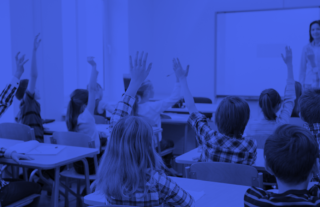What is Remote Learning and How Effective Can It Be?


In the middle of March, the education world changed in the blink of an eye. One day, schools ran normally, as they had for many years — with millions of adults and young people gathering in school buildings and classrooms, working toward the goals of teaching and learning. The next day, with the coronavirus spreading, thousands of schools closed across the country. Teachers and students stayed at home. School districts scrambled to provide students with laptops and ensure internet access. Teachers scrambled to transfer their lessons and assignments to an online environment. Parents scrambled to offer their children support to process the abrupt change. And young people scrambled to make sense of it all.

Amid all of this change, many of us have learned new terms — like remote learning, distance learning, online learning, virtual learning, blended learning, hybrid learning, and homeschooling. Though many people use these terms interchangeably, there are important differences to consider, especially as communities debate on what’s best for their children and school districts attempt to draft education plans for the fall.
What is the definition of remote learning?
Simply put, remote learning is the process of teaching and learning performed at a distance. Rather than having students and teachers coming together in person, remote learning means that students are distanced from their teacher and their peers.
The most effective remote learning attempts to mirror the classroom environment virtually, as much as that’s possible when the student and teacher are in two different places.
Technically, no technology is required for remote learning to take place, nor does remote learning have to take place online. Indeed, during the most recent quarantine, many elementary school districts opted to focus their efforts on mailing out work packets home and having teachers call students to support them in completing assignments. However, by no means was this practice effective. Because laptops and access to wifi were limited in some communities, teachers had to make do without the support of electronic devices and other tools for their students.
What does asynchronous / synchronous learning from a distance mean?
Though there are many ways that remote learning can take place, the best experiences occur when teachers combine synchronous learning opportunities that replicate the classroom with asynchronous opportunities that promote independent study.
For synchronous experiences, where students learn together at the same time, technology is required. Whether it’s a computer, Chromebook, or tablet with internet access, or a mobile phone, technology is a must for students and teachers to share learning experiences in real-time. In addition, meeting platforms like Zoom or Google Meet allow classes to gather and collaborate.
For asynchronous experiences, where students learn on a more individual schedule, a learning management system — like Canvas or Google Classroom — allows for the organization of learning opportunities from a distance. It’s also a portal for students and teachers to interact and communicate when they’re not “in class.” Furthermore, teachers can keep track of their students’ progress and offer feedback.
What’s the difference between remote, online, and distance learning?
Currently, there is debate about the difference between remote, online, and distance learning. Some educators equate “remote” and “distance” learning as both being performed away from the school and classroom. But other educators distinguish the terms by emphasizing that “remote” learning has emerged as an emergency intervention as a result of the coronavirus, while distance learning is more thoughtfully and proactively planned out.
Online learning, on the other hand, is different. It offers a course of study online without trying to replicate the face-to-face classroom experience. For that reason, online courses are designed over several months to offer students a series of learning engagements that are tailored to an entirely online environment. Rather than providing traditional lectures, or a sequence of assignments to complete, online learning includes a variety of modalities that guide students through content modules. Special attention is paid to eliciting emotion and motivation in students and being intentional in encouraging students to apply their knowledge frequently. The social and emotional parts of learning is getting much more attention in the teaching world in the form of social-emotional learning.
How effective can remote learning be?
Notwithstanding the herculean efforts of students, teachers, and parents, the latest version of remote learning — performed across the country this past spring, and perhaps continuing into the fall — would not offer evidence that remote learning is effective.
According to early research, forced remote learning during the Covid-19 pandemic set students back months, sometimes as much as half as they would have learned in a physical classroom. On top of that, remote learning has “further entrenched racial and economic disparities.”
By and large, student engagement was down, teachers lowered standards for rigor and student performance, and too many young people did not have access to the tools they needed to learn. In addition, diverse learners often did not receive the learning support required by law. Furthermore, some districts, in agreements with teacher unions, chose to suspend classes for long periods of time, severely limit synchronous learning experiences, and eliminate grading and feedback on student work.
But despite the challenges of the spring, remote learning can be extremely effective. If all students have access to an electronic device and internet, and if teachers have experience and training in how to provide high-quality learning experiences online, then the constraints of traditional classroom education can be challenged.
Remote learning provides flexibility for students to learn from anywhere and for parents to support their children. It allows students who want to explore enrichment opportunities to learn more independently. Finally, remote learning offers additional ways for teachers and students to collaborate together so that young people can reach their academic goals.
Summary
If you asked the typical educator last year about the terms “remote learning” and “distance learning” and to evaluate their effectiveness, you might have received general or even quizzical responses. However, in just a few months time, the landscape has changed dramatically. Not only have teachers been thrown into a new reality of remote learning, but so have students and parents. As a result, our shared understanding of these terms is very much in its infancy. As schools reopen in the fall, or choose to continue with remote learning, our knowledge about distance learning will undoubtedly grow, develop and evolve with the new normal.




